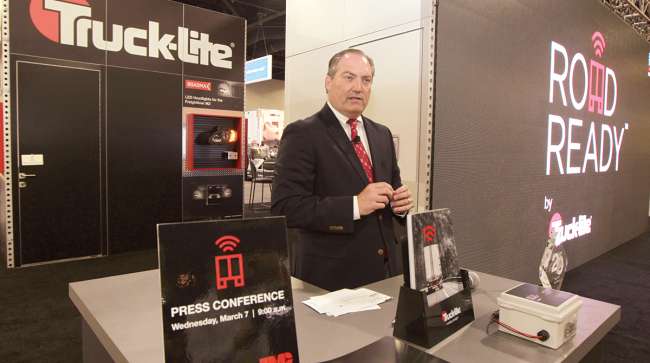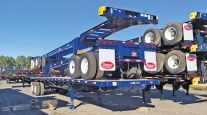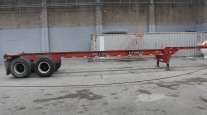Asset Tracking Spreads to Intermodal Chassis

While asset-tracking devices are finding increased adoption with intermodal container fleets, uptake for that venerable old workhorse of the intermodal supply chain — the chassis — faces different challenges.
In terms of asset-tracking devices, the debate among railroads, intermodal operators, ports, trucking firms and asset owners is whether a chassis needs such tracking technology if it’s already resident on the container.
RELATED: Internet of Things arrives in intermodal
Technology vendors such as Spireon, Truck-Lite and BlackBerry, among others, are betting that they are.
The goal is to provide better, more timely and accurate intelligence on chassis location and when a chassis (and container) can return from the shipper’s warehouse to the marine terminal. Adding to the challenge is that many times chassis are returned to a different terminal from the one from which they departed to meet the equipment repositioning needs of vessel operators.
Equipping chassis with GPS-enabled tracking devices would help illuminate the “black hole” of visibility and provide better data for predictive planning and proactive management, leading to higher utilization, industry analysts said.
The opportunity is significant: One study found chassis repositioning costs at Southern California ports alone consumed some $20 million annually.
Spireon’s customers have identified two high-value uses for real-time chassis-tracking data, said Roni Taylor, vice president of strategy and business development.
“The No. 1 used report is a yard check,” she said.
Every morning a yard or equipment planner can call up, or have automatically generated, a report, by landmark, that shows the location of every asset, in their yard, at the customer, a rail ramp or port.
The second most popular report is real-time mileage by asset.

Taylor
Taylor said this is important for two reasons: to properly schedule maintenance and to understand — and find opportunities to improve — utilization. The report updates where and how long customers are holding equipment.
“The capacity crunch [is] driving adoption,” Taylor said. Technologies that provide real-time views into assets in motion or idle are on the rise “because customers are looking to do more with the assets they have today.”
Other vendors also are eyeing intermodal chassis as an opportunity for tracking technology to expand.
Industry supplier Truck-Lite, best known for manufacturing heavy- duty LED safety lighting and other safety and electrical components for trucks and trailers, recently launched Road Ready, a trailer monitoring and communication system that utilizes a solar-powered control unit coupled with “peel and stick” sensors. The sensors capture and relay to the control unit data points such as tire pressure, light-out alerts, anti-lock brake system monitoring, temperature and other event-based asset-performance information.
A new version of Road Ready is in development and expected to be introduced this year for chassis, said Rob Richard, vice president and general manager of Truck-Lite’s Road Ready division. The unit would provide GPS-enabled tracking for chassis as well as features and functions similar to those for trailers.




